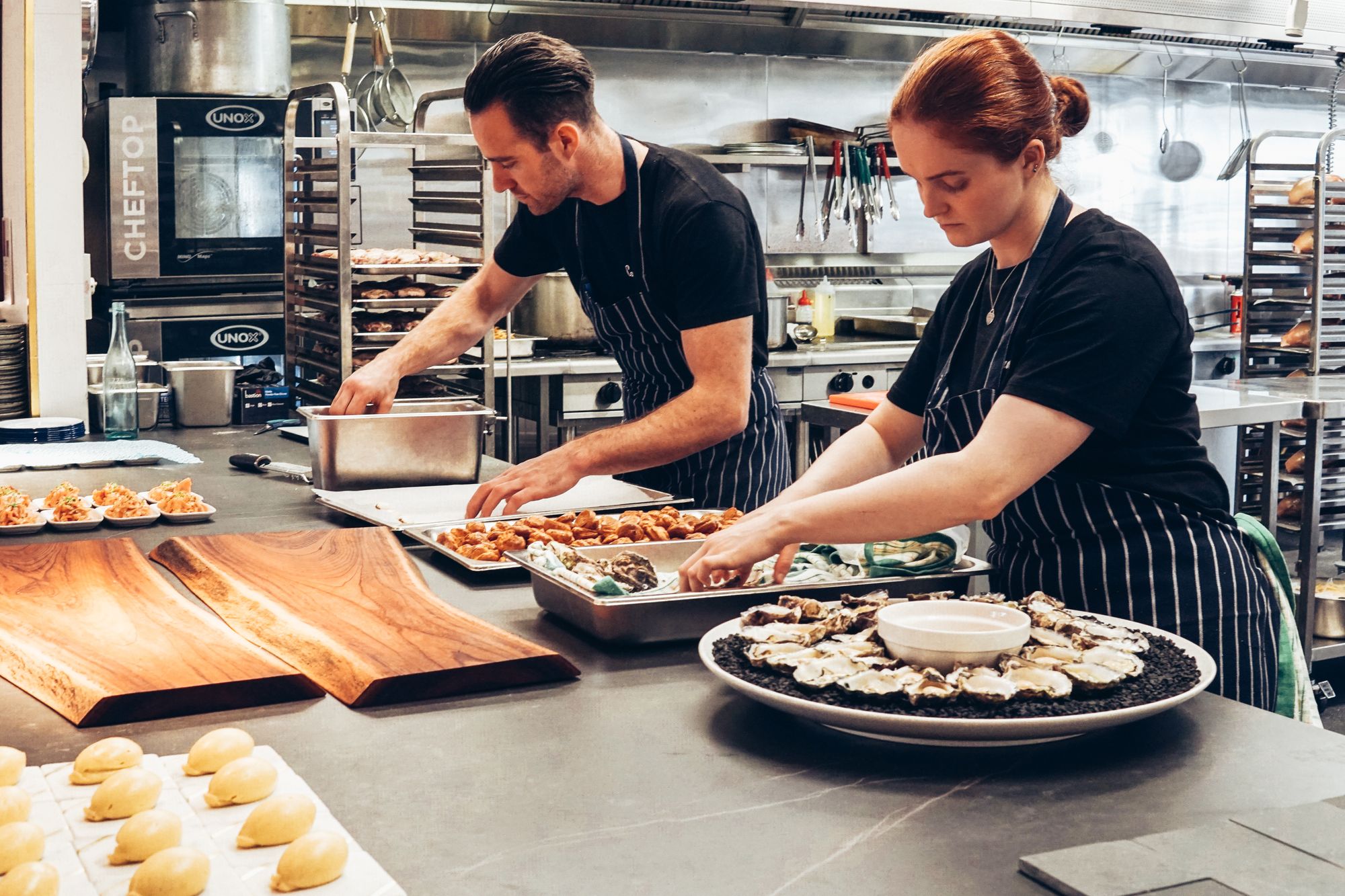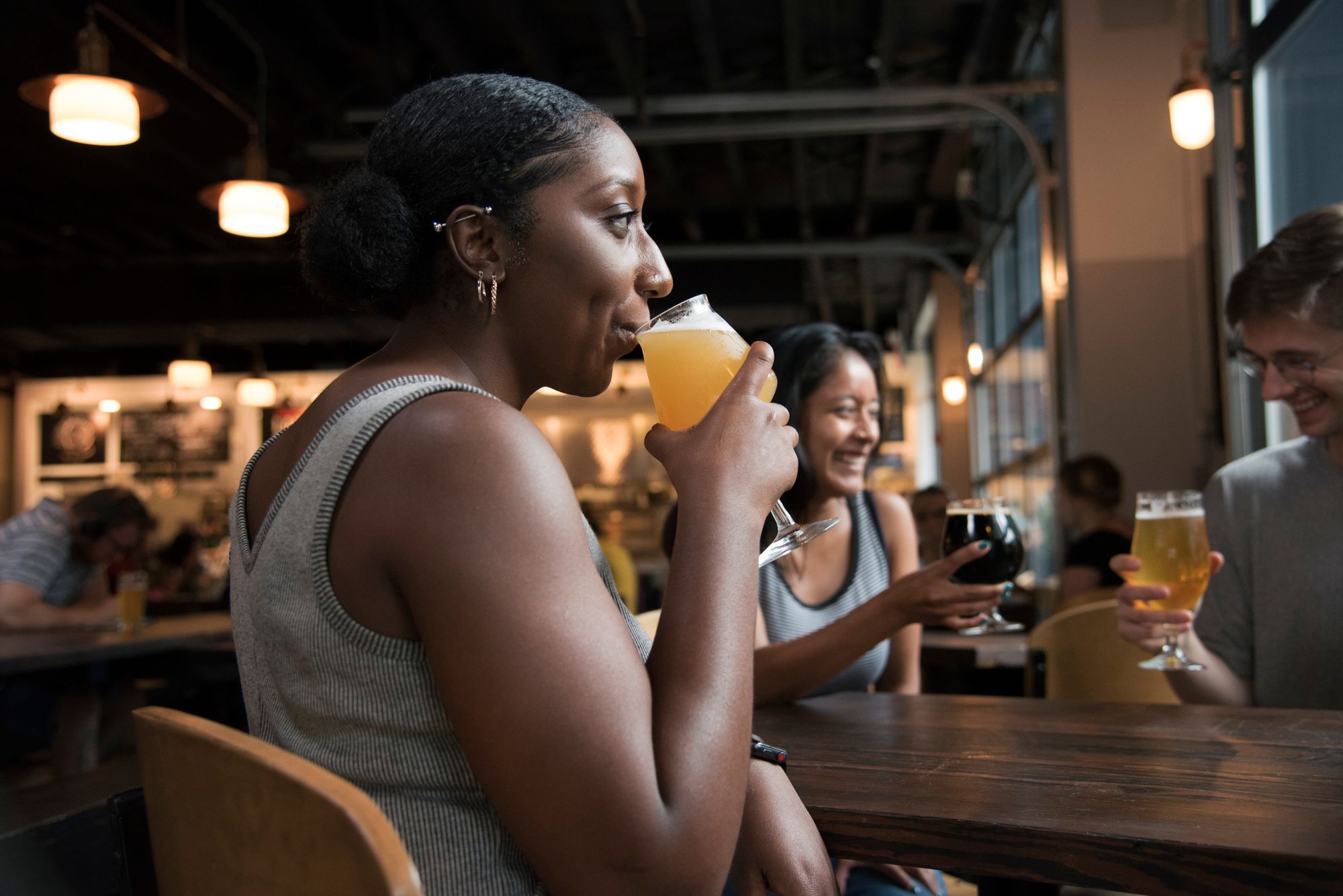The fact that bars and restaurants were able to open in England from 4th July brought both excitement and concern in equal measure – and understandably so. It’s great news for hundreds of hospitality venues who have been struggling to stay afloat during the pandemic (in fact, a survey by UKHospitality revealed that 60% of the hospitality sector were planning to open either on the 4th July or in the few days following, according to The Caterer). But of course, the hopes of economic recovery have to be balanced with safety considerations.
So, how can pubs, bars and restaurants make sure that they’re prepared to operate as safely as possible on reopening? Well, the government released in-depth guidance specifically for these venues to follow. But, as it’s 43 pages long, we’ve summarised the key points below. And don't forget that if you're looking for guidance on safer events specifically, we've also released a white paper with some more detailed measures you could take once live events are once again permitted.
A quick summary of what you need to do
- Include COVID-19 in your risk assessment and share it with employees
- Keep contact details for customers for 21 days
- Ensure people can stay at least 1 metre apart
- Keep the volume down on TVs and pre-recorded music so people don’t have to shout
- Make sure there’s no live entertainment, including quizzes
- Increase the frequency of hand washing and surface cleaning
- Make sure that workers and customers who feel unwell don’t attend the venue
Keeping your employees safe

As an employer, you have a duty to create a safe place of work. Reopening during a pandemic is an added risk that you probably hadn’t considered when you last updated your risk assessment.
So, in order to keep staff safe, you should:
- Complete and share a risk assessment that deals with COVID-19.
- Give anyone who doesn’t need to be on-site the option to work from home.
- Make sure that workers who feel unwell don’t attend the venue.
- Increase the frequency of hand washing and surface cleaning.
- Maintain social distancing measures between people (ideally two metres or, where that’s not possible, one metre with risk mitigation).
However, every business is different, and there might be times where social distancing just isn’t possible. So, what happens when you just can’t follow social distancing guidelines in full?
Well, it’s your duty as an employer to consider whether that activity has to take place in order for your business to operate. If not, don’t do it! But if it’s essential, you’ll need to take all the mitigating actions possible to minimise the risk of the virus spreading between staff.
Ways of minimising the spread of infection include:
- Keeping the time spent doing the activity as short as possible.
- Washing hands and cleaning surfaces even more often (eg. consider making hand sanitiser and disinfectant wipes readily available).
- Favouring back-to-back or side-to-side working rather than face-to-face working.
- Using screens or barriers to separate workers from one another and from customers at service points.
- Using back-to-back or side-to-side working (rather than face-to-face) whenever possible.
- Using fixed teams or partnering to limit the number of people each person comes into contact with
If the activity needs people to work face-to-face for a prolonged period of time with more than just a small, fixed team, you’ll need to seriously consider whether it’s safe for it to go ahead.
Keeping your customers safe

Pubs and restaurants don’t just have a duty to look after their staff. They also have a duty to ensure their venues are safe for members of the public. This boils down to four main categories.
1. Keeping records
In order to help with the NHS Test and Trace system, you’ll need to keep records and contact details for your customers for a period of 21 days. You may need to hand this data over to help contain clusters and outbreaks, although it’s not yet clear exactly how this will work (particularly when it comes to data protection legislation).
2. Social distancing
You’ll need to take steps to ensure that social distancing rules can be followed by customers as well as employees. Where possible, this should be a distance of two metres, but where that’s not viable, one metre with risk mitigation is fine.
This means you’ll probably need to:
- Work out how many customers can safely attend your venue while carrying out social distancing rules.
- Increase the distance between tables and chairs to make sure customers from different households and support bubbles can keep their distance.
- Take into consideration pinch points, busy areas and how much space you have available indoors versus outdoors.
- Make sure that customers outdoors are aware that they can’t enter the venue to shelter from the rain unless there’s enough space.
- Look at ways to reduce congestion and contact between customers, such as introducing a one-way flow (but remember to bear in mind reasonable adjustments for people who need them, such as disabled customers).
- Reduce the need for customers to queue and encourage queuing outdoors rather than indoors where it’s necessary.
- Limit access to the venue for people waiting for takeaways.
- Use social distancing floor markings.
- Give customers clear guidance on social distancing and hygiene before arrival (eg. by phone, on the website or by email) and on arrival (eg. using signs).
- Make sure that customers are aware of the limits on group gatherings and encourage compliance.
- Remind customers with children that they’re responsible for making sure their children follow social distancing guidelines
3. Preventing transmission
Preventing the spread of Coronavirus doesn’t just come down to social distancing. There are also other factors that need to be taken into consideration, mainly around points of touch.
You should consider:
- Limiting the number of surfaces that are touched by staff and customers (eg. discouraging customers from leaning on the bar or providing staff with surgical gloves).
- Encouraging contactless payment, apps and online ordering.
- Carefully managing the way customers help themselves to food, cutlery or condiments.
- Providing disposable condiments.
- Encouraging customers and staff to use outdoor areas (which could include encouraging staff and customers to wear face masks when indoors).
- Encouraging regular hand washing (eg. by placing hand sanitising stations throughout the venue).
- Preventing customers from returning glasses to the bar.
- Ensuring that customers who feel unwell don't enter the venue (eg. by checking body temperature as they arrive with a forehead thermometer).
4. The wider community
When you’re preparing to reopen, you don’t just have to think about how things will work once your customers enter your venue. You’ll also need to think about how your processes and customers might impact the businesses and public spaces around you.
This is likely to include:
- Working with your local authority or landlord to take into account queues of customers in car parks, on pavements or on high streets.
- Managing outdoor queues to make sure that customers, neighbouring businesses and the public are safe (eg. having a member of staff direct customers or providing a barrier for customers to queue behind).
- Working with other local businesses and local authorities to provide more parking facilities and bike racks so customers don’t have to take public transport.
- Working with other local businesses and local authorities to spread the number of people travelling to the area throughout the day (eg. by staggering opening hours to avoid overcrowding on public transport)
If you're keen to start preparing but this list looks a little overwhelming, why not check out our venue packs? These contain all the essential equipment and supplies you need to support the safety of your staff and delegates - from hand sanitising stations to sneeze guards and face masks. Plus, you can get £50 off your first order of £500 or more at the safer events shop by clicking here.
As you can see, there are lots of measures you’ll need to put in place before reopening your bar or restaurant on or soon after the 4th July. But the key things to remember are maintaining social distancing and keeping your staff and customers safe. The rest is all about helping you achieve those goals!
If you're on the hunt for guidance on how you can hold safer events once live events are allowed to happen again, check out our white paper for safer events. Plus, remember that we offer a Safer Events Accreditation – by getting an independent panel to check and improve the processes you’ve put in place, you can relax in the knowledge that you’ve taken every measure you can to ensure the safety of your staff and customers. And of course, a Safer Events Accreditation means increased confidence from your customers too!

Author
Imogen Beech
With a love of interior design, Imogen’s writing experience has taken her from the mansions of the rich and famous to the capital’s most unique events spaces on Hire Space.
